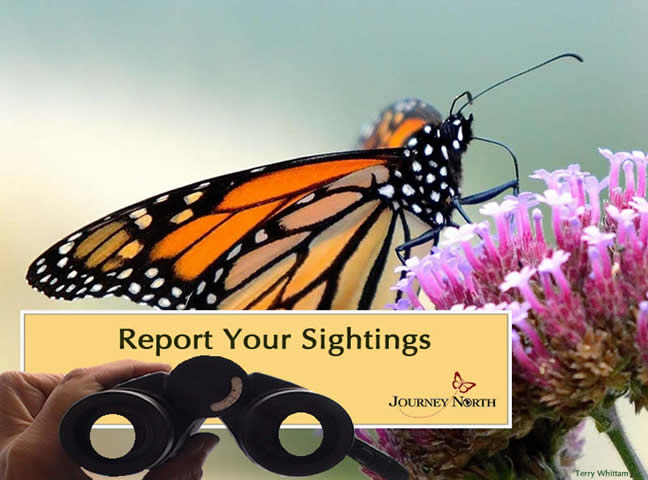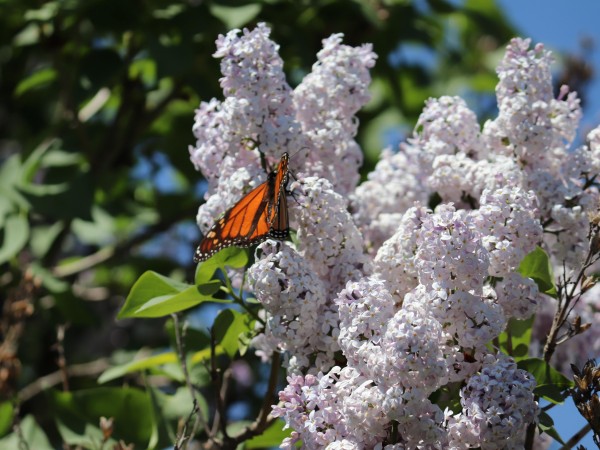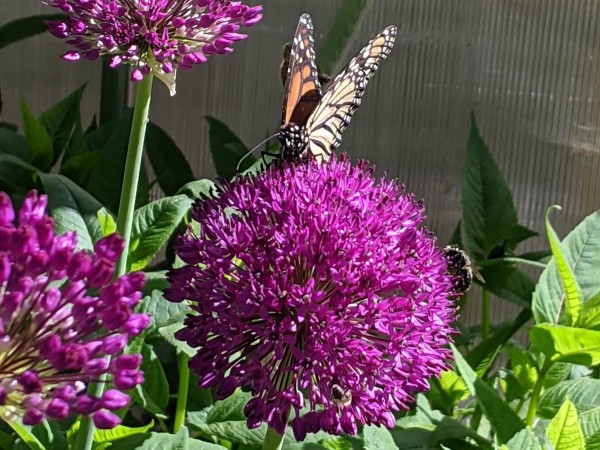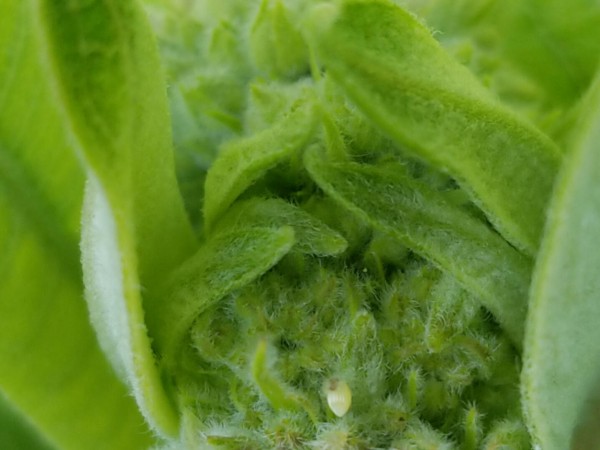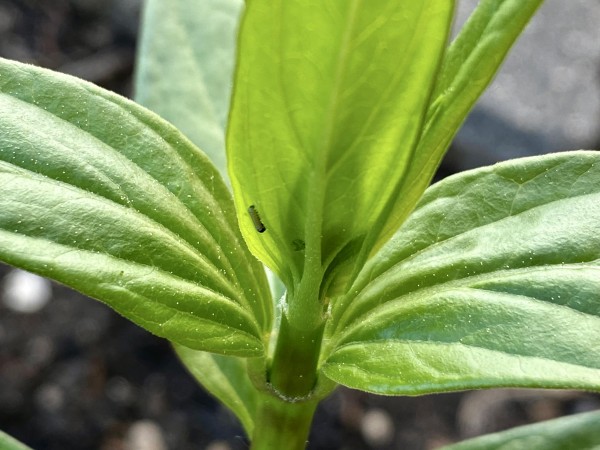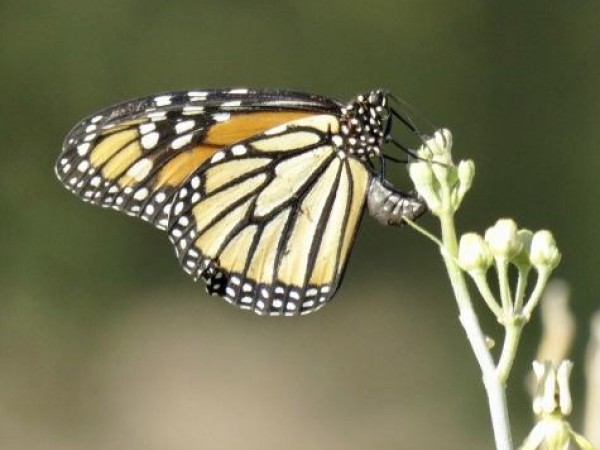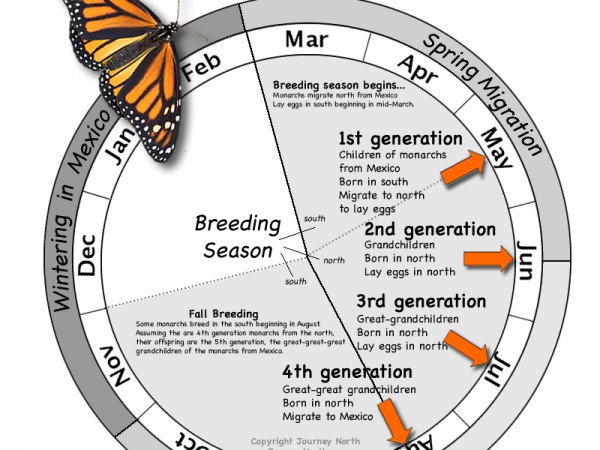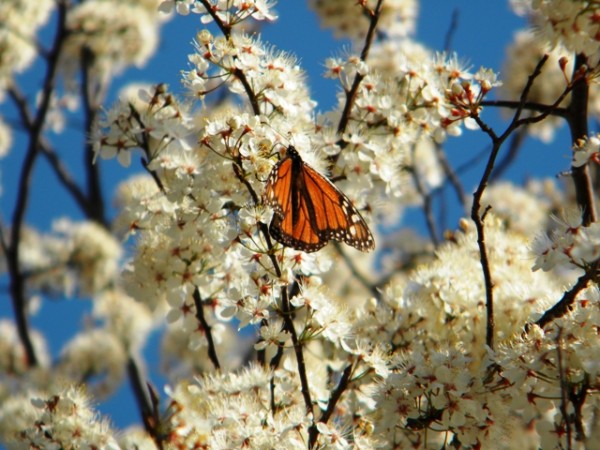Nearing Northern Limits
Eastern Monarch Population
Migrating Monarchs
The leading edge of monarch migration is still hovering around latitude 50°N in Winnipeg, Manitoba. First observations of monarchs continue to pick up in Ontario, and monarchs are now being spotted in Quebec and Nova Scotia.
No reports yet in Vermont, Maine, New Brunswick, and Prince Edward Island. At this time last year, there were several reports in Vermont and Maine. Explore our Monarch Adult (FIRST sighting) map from 2020 and compare. Over the coming week, monarchs should move into these areas as temperatures, wind directions and speeds will be favorable.
Lisa in Kings, NS: "She just fluttered on past me on my deck. She looked really good considering her long flight. I have lots of Milkweed ready for her and others." (05/26/2021)
Angeline in Sault Ste Marie, ON: "Spotted this one in the lilac bush in my front yard. Not positive but I believe it was a female." (05/28/2021)
Marla in Chelsea, QC: "First sighted this year in patch of Milkweed. None last year although lots of milkweed." (05/29/2021)
Evelyn in St Andrews, MB: "Saw it flying around our milkweed which has just sprouted." (05/30/2021)
Anna in Parry Sound District, ON: "Surprised to see a female Monarch (very good condition) this morning. About three weeks earlier than 2020. I will check my milkweed for any eggs. She was nectaring on my allium." (05/30/2021)
Sarah in Toronto, ON: "Spotted this lovely lady leaving eggs on our milkweed today!" (06/01/2021)
Eggs and Larvae
Female monarchs are laying eggs of the 2nd generation now. These monarchs will be the grandchildren of butterflies that overwintered in Mexico. Monarch generations are continuing the cycle. It takes about one month for each to develop. Over the summer, three generations will be produced in the north.
Dodie in Deerbrook, WI: "I saw an adult monarch flying about so I went to check on the local milkweed growth. On inspection of the approximately 2 to 7-inch growth in one area of our property, I discovered over 17 eggs." (05/29/2021)
Lea in Grand Rapids, MI: "Students found eggs on various common milkweed on our school campus. At one point they even saw their first adult monarch butterfly of the season." (06/01/2021)
Monarch larvae are already being sighted as far north as Manitoba. At this time last year, the northernmost report was from Fish Creek, Wisconsin.
Stephanie in Winnipeg, MB: "Hello little one!" (06/01/2021)
Western Monarch Population
Letter from Gail Morris: Western Monarch Spring Report #14
Good news out west as monarchs are making progress north. Gail Morris writes, "Monarchs are still journeying north as they near the 'finish line' to their summer breeding grounds. An exciting find – monarchs are now documented in Northern California near the Oregon border for the first time this year! Dr. David James shares his update from his annual field trip to the Trinity River searching for monarchs, too. A new sighting in Oregon appears as well – monarchs are still on the move!"
Read more of Gail Morris’ Letter: Western Monarch Spring Report #14»
Plant Pollinator Gardens and Keep Reporting to Journey North
Monarchs need milkweed, but they also need nectar. Do some research to find nectar-rich flowers that grow well in your region. Pay attention to flowering dates so you can provide nectar for monarchs from the time they arrive in the spring until they migrate south in the fall.
Continue to report adult monarchs, monarch eggs, monarch caterpillars, and milkweed.


